Founded in 1885, the Chautauqua community will celebrate its 130th season in 2015, honoring men, women, and families who have been the stewards of the community’s rich history. To honor our past and the nation’s birth date, a Memorial Walkway will be dedicated on July 4, 2015, at 10 AM. The ceremony will feature a flag draped Abraham Lincoln coffin replica from the May 2015 Reenactment ceremonies in Springfield, Illinois and the raising of that 1865 American flag.
Enter the community from the Elsah-Chautauqua Road
More details:
The Auditorium Hillside
Important places can be defined by geographic location and the presence of significant structures. Our Chautauqua is such a place, and the hillside in front of the historic 1890 auditorium is a metaphor for our rich community history. It provides a context for understanding what this Chautauqua community means today and what it has stood for over the 130 years of its existence.
This space has always been important to this Chautauqua, as important in its own right as the Auditorium. The front door to our first public building, and, connected to the Auditorium, the hillside is a symbol of what the Chautauqua movement represented: community, fellowship, culture, civil discourse, and healing, healing the scars of national conflict. The Hillside was a gathering place for the men who founded this Chautauqua and who were, many of them, veterans of the Civil War. Hallowed ground, this is where members of the Grand Army of the Republic met with comrades, where women—wives, mothers, daughters, aunts, and sisters consoled one another over the loss of husbands, sons, and fathers, where the spirit of Mr. Lincoln’s word, with malice towards none, with charity towards all took form and shape.
A very large Thank You and our compliments to . . .
Chuck Bryant, leader of the Chautauqua Veterans Flag Detail and the many members of the Detail, organized in 2004 and providing service each season for the individual flag ceremonies and our July 4 ceremony.
Our July 4 Ceremony Producers, the Historical Society for sponsoring the event, Lori Adams, Scott Adams, and Dan Winters for audio support, Debbie Vaugniaux for the Star Spangled Banner and Lori Hopkins for the Battle Hymn of the Republic, Bill Russell for his Bosun Pipe assistance, Joe Laffler for narrating the moving text of Aaron Copland’s Lincoln Portrait, our Civil War Reenactors Paul and Nathan Shetley, and Tim Tomlinson for developing and directing the ceremony.
The supporters of the Memorial Walkway Project, the individuals, families, and Chautauqua organizations that answered early the call for leadership gifts: the Historical Society, sponsor of the 2004 Clarkson Sundial restoration project and lead organization for the Walkway, the LCIA and Girl’s Club, the Yellow Balloon and Men’s Club, the NPC Church Assembly, Chuck Bryant, Jim and Mary Roberts, the Judy Hurd Trust, Ellen Jackson, Bob Edmunds, Bill Grundmann, the Timmermeier family, the Polster family, and Dave and Chris Hagin. No part of the project was begun until funds to support it were in hand—these folks and organizations made it all possible. Tim Tomlinson organized and administered the funding effort. Don Bryant was the on-site construction manager. Early landscape plans and later consultations were volunteered by Andy Scherzer. Graphic designs for the Walkway, the Historical Society flag, and the 150th Lincoln Regiment flag were donated by Mark Hurd. Bob Hormell kept the books for the Historical Society.
The Great Rivers Lincoln Coffin project, and especially the Chautauqua Historical Society for arranging to include the Lincoln replica coffin and the 1865 American flag in the ceremony.
The Memorial Walkway will be a “work in progress” for a long time to come. At the heart of the project are the memorial and legacy stones, engraved stones on the various levels of the Walkway. More than 40 stones are ready to be engraved. The engraving will take place on site.
Abraham Lincoln and the Piasa Chautauqua.
Six score and ten years ago this community…. this community was founded six score and ten years ago. Mr. Lincoln was shot and killed twenty years before our 1885 founding date, so it is clear that he never “slept” in a Chautauqua cottage. There is no record that he visited Grafton or Elsah, the two nearby towns to our valley. Mr. Lincoln did know Alton well, and may have passed by the future Chautauqua in 1858 as he traveled downriver from Quincy for his Alton debate with Stephen Douglas in 1858.
Our founders, however, knew Mr. Lincoln, and many admired him greatly. One founder, Benjamin St. James Fry, a chaplain for the 63rd Ohio Volunteer Infantry, wrote Mr. Lincoln a letter in 1864. Fry told the President he was much admired among the troops and that his reelection in 1864 was of the utmost importance to the future of the United States as one country with one destiny.
Other founders shared a common experience with Mr. Lincoln. Just as Lincoln volunteered to serve in the militia in the Black Hawk War in the 1830s, they were enlisted men and officers in the many Illinois Volunteer regiments recruited to fight in the Civil War. Now Mr. Lincoln was the Commander-in-Chief, but there was a common bond —like them, he was a son of Illinois.
Elsah Village and Jerseyville had chapters of the Grand Army of the Republic, and the Grand Army woman’s auxiliary, the Women’s Relief Corps, operated a boarding house in the Piasa Chautauqua. Some Chautauquans may have attended his funeral in Springfield in 1865. Certainly, many of them paid honor and tribute to his memory around campfires in the Piasa Chautauqua as the community celebrated Grand Army Day each year.
The Billy Clarkson Sundial was dedicated on July 4, 1954. It is our community’s most significant visual reminder that the liberties we enjoy as citizens come at a cost. The Sundial, a gift to our Chautauqua from the Clarkson family, represents honor, valor, courage, and the willingness of American men and women to give “that last full measure of devotion” which Abraham Lincoln spoke of in the Gettysburg Address. It is about service in the highest form, above and beyond the call to duty.
Scores of Chautauqua men and women have answered this call to duty over the years. Today’s ceremony honors these Chautauquans and all American men and women, past and present, who embody the ideal of “the citizen soldier” who gave valued service to their fellow citizens.
The Clarkson Sundial was rededicated in 2004, and this project builds on that experience, made possible because of a commitment to preserving and honoring the memory of Clarkson and his Chautauqua comrades. The annual July 4 ceremonies over the past ten years are demonstration of our dedication to stewardship of the site as community hallowed ground. The Project gives us an opportunity to honor the everyday legacy of service to Piasa Chautauqua from our organizations, families, and individuals over the 130 years of our community history. The Hillside is a special site for recognition, remembrance, and reflection. To be here is to stand “in the presence of the past.”
The Program
Tim Tomlinson, Marshall
Prelude: Hymn to the Fallen, John Williams, from “Saving Private Ryan;” Fanfare for the Common Man, Aaron Copland
Bosun’s pipe, All Hands, Bill Russell, USN, Chautauqua resident
Assembly of Chautauqua veterans as designated
Call to Colors
Presentation of the Colors: The National Emblem March, Edwin Eugene Bagley
Order of Entrance: ceremonial United States flag, Army, Marine Corps, Navy, Coast Guard, Air Force, Merchant Marine, POW/MIA, Gold Star, Blue Star (The State of Illinois, Christian Church, New Piasa Chautauqua, Chautauqua Historical Society, and the 150th Lincoln Volunteer Regiment flags have been posted in advance of the ceremony.)
Opening Prayer: Dr. Clint McCann, Resident Minister, NPCCA
The Star Spangled Banner, Debbie Vaugniaux, Chautauqua resident, a Cappella
Memorial Walkway Dedication: Presentation of the Walkway to the community; remarks by Jack Weyforth, President, Chautauqua Historical Society; acceptance of the Walkway for the community, Bob Hormell, President, New Piasa Chautauqua; remarks by Tim Tomlinson, “In the Presence of the Past”
Bosun’s pipe, All Hands, Bill Russell, USN
Introduction of World War II veterans: Bill Randall (USN), Charles Schaeffer (USN), Dan Zimmerman (USA)
Retreat the flag, the flag of Jerry Podesva, United States Navy World War II/Korean War veteran, will be lowered to half-staff.
Taps, respectful silence in memory of Jerry Podesva (USN), Billy Clarkson, USMC, Ken Trabue (USA), fallen Americans in Afghanistan and Iraq, and to all veterans; Trumpet: Katie Wagers, Chautauqua resident
Raise the flag to full staff, lower and fold the Podesva flag; present the flag to the Podesva family
Rufflles and Flourishes
Hail to the Chief, the Chautauqua Veterans Flag Detail will remove the flag from the replica of the coffin in which Abraham Lincoln’s body was returned from Washington City to Springfield, Illinois in 1865, raise the 36 star flag to full staff and lower it to half staff
Lincoln Portrait, by Aaron Copland, orchestral excerpt with narration by Joe Laffler, USA, Chautauqua resident
Hail to the Chief, raise the 1865 American flag to full staff
Battle Hymn of the Republic, Lori Hopkins, USMC, Supt. of Schools, CUSD100, a Capella
Pledge of Allegiance, all, Chautauqua Veterans Flag Detail leader Chuck Bryant, USA, Chautauqua resident
Benediction, Dr. Clint McCann
Bosun’s pipe, All Hands, Bill Russell, USN
Recessional, Stars and Stripes Forever, John Philip Sousa
The Great Rivers Lincoln Coffin was produced by the Chautauqua Historical Society in collaboration with Historic Elsah Foundation and the Grafton Historical Society. It was the official coffin for the Lincoln Funeral Reenactment Ceremonies in Springfield, Illinois on May 2-3, 2015. The 150th Lincoln Volunteer Regiment is being formed to support the stewardship of the Coffin. Chautauquans and guests are invited to review the Lincoln coffin.
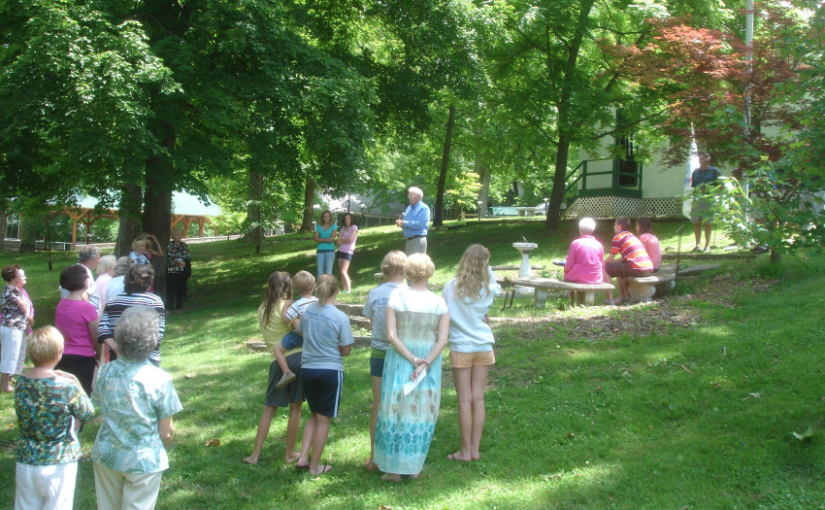
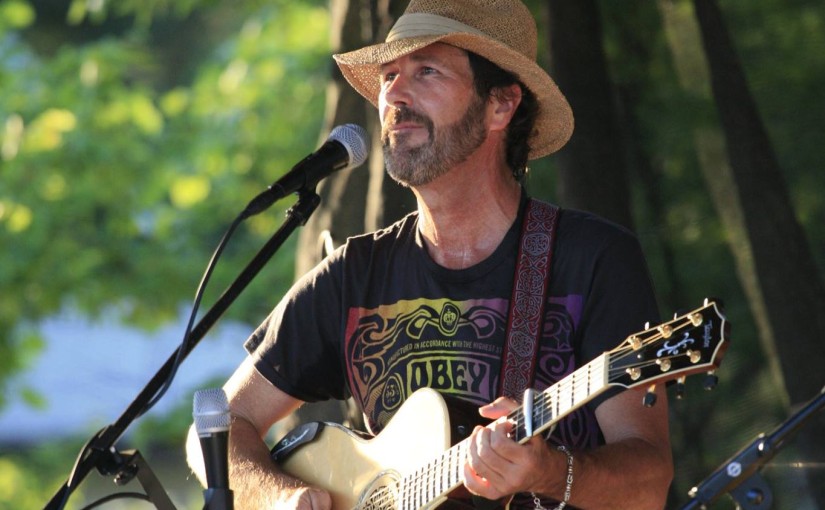
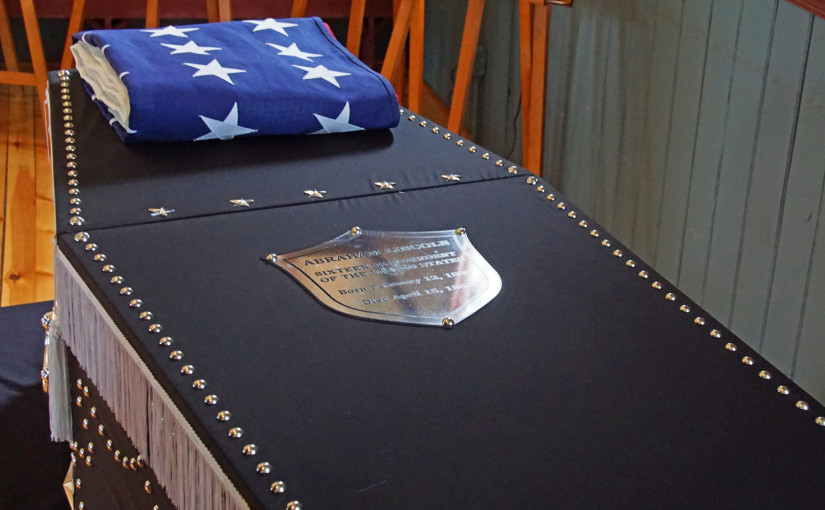
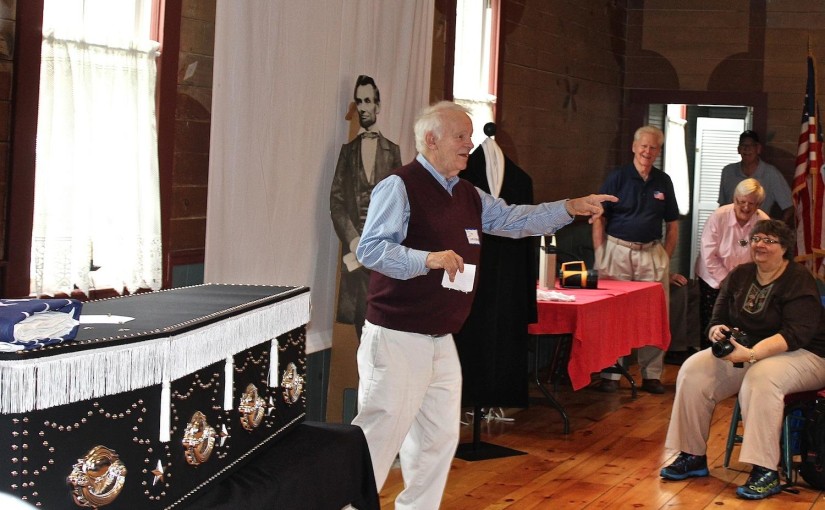
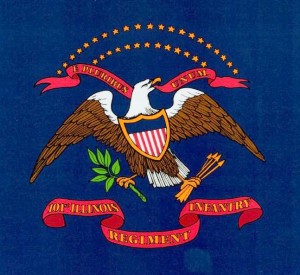 Saturday, April 25 at 2 pm
Saturday, April 25 at 2 pm